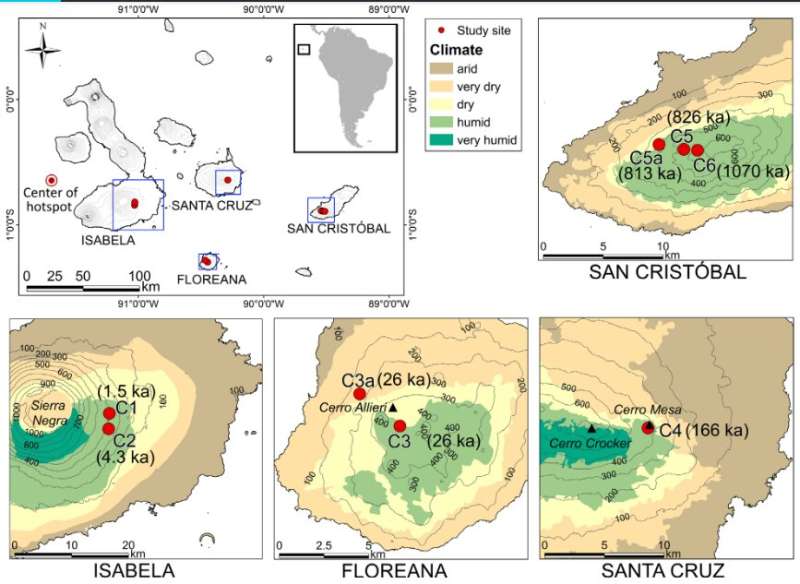Soil formation of the Galápagos Islands

The Galápagos Islands are known for their extreme isolation and unusual animal life, with rare species inhabiting the islands. But little was known about the soils until a group of scientists began studying them in earnest in 2016. The December 15th Soils Matter blog describes the soil formation on this remote archipelago of nineteen islands.
In 1962, an expedition of Belgian soil scientists went to the Galápagos to do a soil survey and sample collection, which was helpful in the more current research. The findings of the 2016 study were published in Soil Science Society of America Journal.
The Galápagos Islands' parent materials are volcanic in nature. And the soil-forming factors of Climate, Organisms, Relief, Topography (landscape) and Parent material are all quite different on the islands than they are in, say, the United States Midwest. Areas of the island that are drier can have less mature soil than the higher, humid regions.
According to the paper's authors "The Galápagos Islands are an ideal outdoor laboratory for studying weathering and soil formation under relatively pristine conditions. The observed soil changes in response to climate and duration of weathering have important bearings on the soils' functioning." This includes factors for how the soils retain and release nutrients to plant life. This could affect the evolution of plant and animal species on this unique archipelago.
There were soils of different ages found in various locations of the islands. How does this happen? Soil formation is a continuous process. As a soil ages, it gradually starts to look different from its parent material. That's because soil is dynamic. Its components—minerals, water, air, organic matter, and organisms—constantly change. Some components are added. Some are lost. Some move from place to place within the soil. And some components are transformed into others.
More information: I Nyoman Candra et al, Soil development and mineral transformations along a one‐million‐year chronosequence on the Galápagos Islands, Soil Science Society of America Journal (2021).
Journal information: Soil Science Society of America Journal
Provided by American Society of Agronomy




















